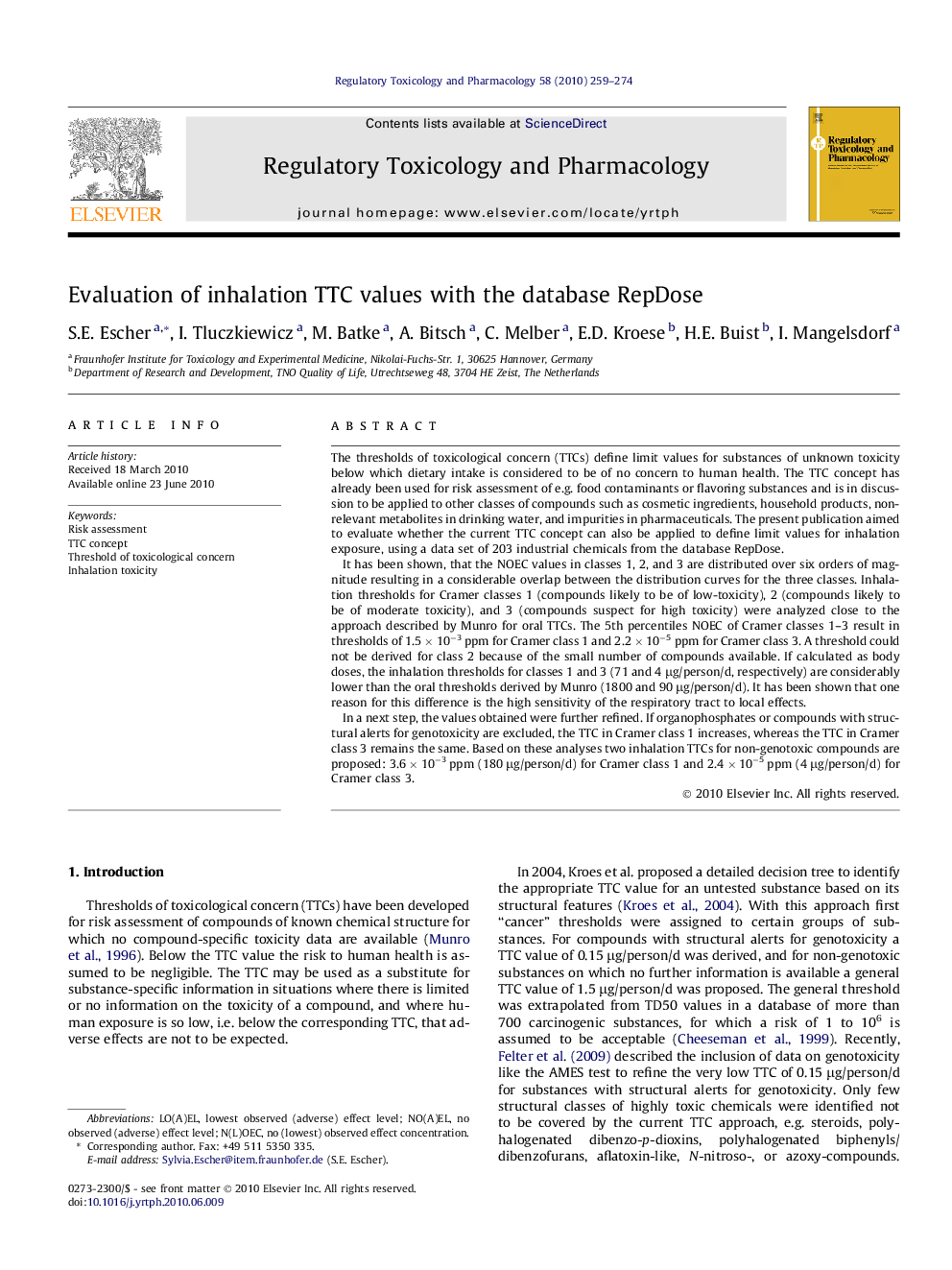| کد مقاله | کد نشریه | سال انتشار | مقاله انگلیسی | نسخه تمام متن |
|---|---|---|---|---|
| 2592527 | 1132026 | 2010 | 16 صفحه PDF | دانلود رایگان |

The thresholds of toxicological concern (TTCs) define limit values for substances of unknown toxicity below which dietary intake is considered to be of no concern to human health. The TTC concept has already been used for risk assessment of e.g. food contaminants or flavoring substances and is in discussion to be applied to other classes of compounds such as cosmetic ingredients, household products, non-relevant metabolites in drinking water, and impurities in pharmaceuticals. The present publication aimed to evaluate whether the current TTC concept can also be applied to define limit values for inhalation exposure, using a data set of 203 industrial chemicals from the database RepDose.It has been shown, that the NOEC values in classes 1, 2, and 3 are distributed over six orders of magnitude resulting in a considerable overlap between the distribution curves for the three classes. Inhalation thresholds for Cramer classes 1 (compounds likely to be of low-toxicity), 2 (compounds likely to be of moderate toxicity), and 3 (compounds suspect for high toxicity) were analyzed close to the approach described by Munro for oral TTCs. The 5th percentiles NOEC of Cramer classes 1–3 result in thresholds of 1.5 × 10−3 ppm for Cramer class 1 and 2.2 × 10−5 ppm for Cramer class 3. A threshold could not be derived for class 2 because of the small number of compounds available. If calculated as body doses, the inhalation thresholds for classes 1 and 3 (71 and 4 μg/person/d, respectively) are considerably lower than the oral thresholds derived by Munro (1800 and 90 μg/person/d). It has been shown that one reason for this difference is the high sensitivity of the respiratory tract to local effects.In a next step, the values obtained were further refined. If organophosphates or compounds with structural alerts for genotoxicity are excluded, the TTC in Cramer class 1 increases, whereas the TTC in Cramer class 3 remains the same. Based on these analyses two inhalation TTCs for non-genotoxic compounds are proposed: 3.6 × 10−3 ppm (180 μg/person/d) for Cramer class 1 and 2.4 × 10−5 ppm (4 μg/person/d) for Cramer class 3.
Journal: Regulatory Toxicology and Pharmacology - Volume 58, Issue 2, November 2010, Pages 259–274